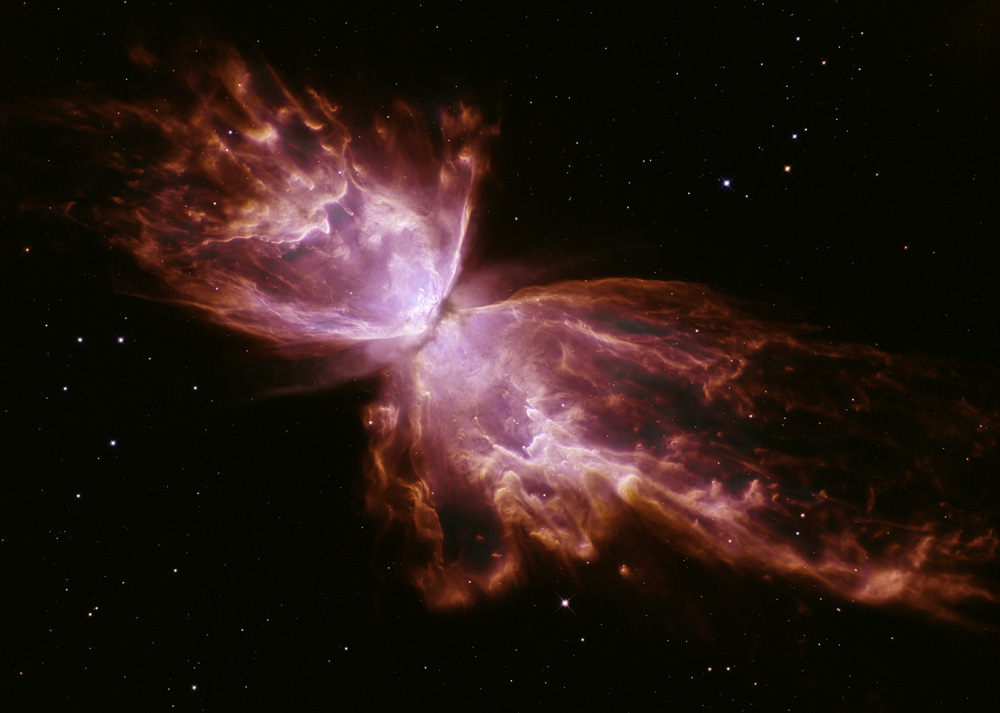
NGC 6302 (2013)
I felt like doing one of the big, pretty ones this time. I thought this was a proto/preplanetary nebula but it might be better described as a young planetary nebula. I’m not entirely sure. When does a planetary nebula go from being a preplanetary nebula to being a regular planetary nebula? It’s kind of like the whole Pluto planet thing. Of course they are all planetary nebulas but where do you draw the line between one type and another? To add to the confusion, the name “protoplanetary” is easily confused with protoplanetary disks. I’ve been using “preplanetary” because that’s less confusing but the inclusion of the word “planetary” is still the root of all confusion.
Anyway, enough of my rambling. Look back up at NGC 6302. It’s amazing. I definitely recommend looking at the original size. There are some very interesting textures in the clouds. Some areas around the brightest central regions are reminiscent of marbled stone or perhaps eddies and currents in a flowing stream of liquid.
Data use is somewhat complicated to explain, but is roughly as follows:
Stars only, affecting all channels: hst_11504_02_wfc3_uvis_f673n_sci
Red: hst_11504_01_wfc3_uvis_f658n_sci
Green: hst_11504_01_wfc3_uvis_f502n_sci
Blue: hst_11504_02_wfc3_uvis_f469n_sci+hst_11504_02_wfc3_uvis_f373n_sci
North is NOT up. It’s 38.9° clockwise from up.
Copyright information:
Hubble data is public domain, but I put a lot of work into combining it into beautiful color images. The minimal credit line should read: NASA / ESA / J. Schmidt

This work is licensed under a Creative Commons Attribution 3.0 Unported License.


